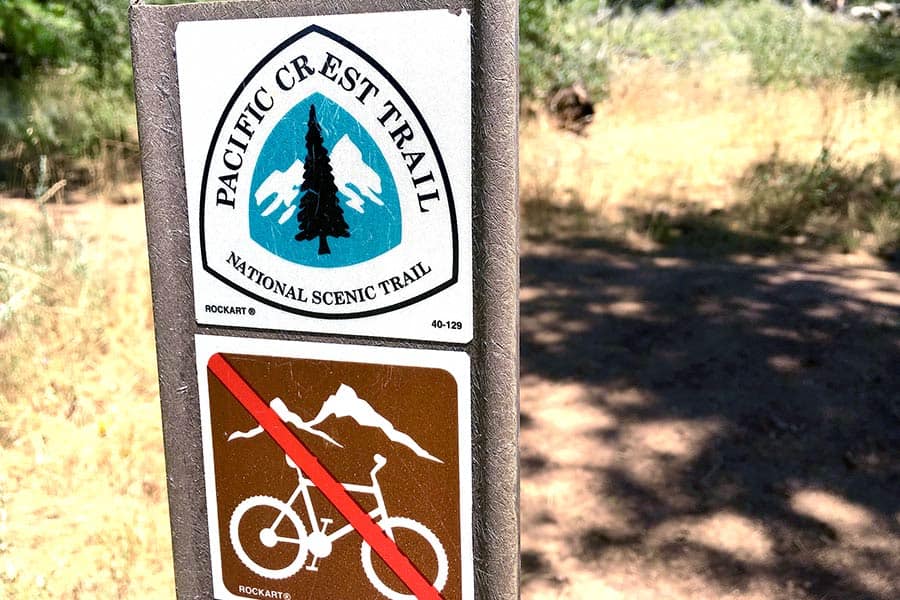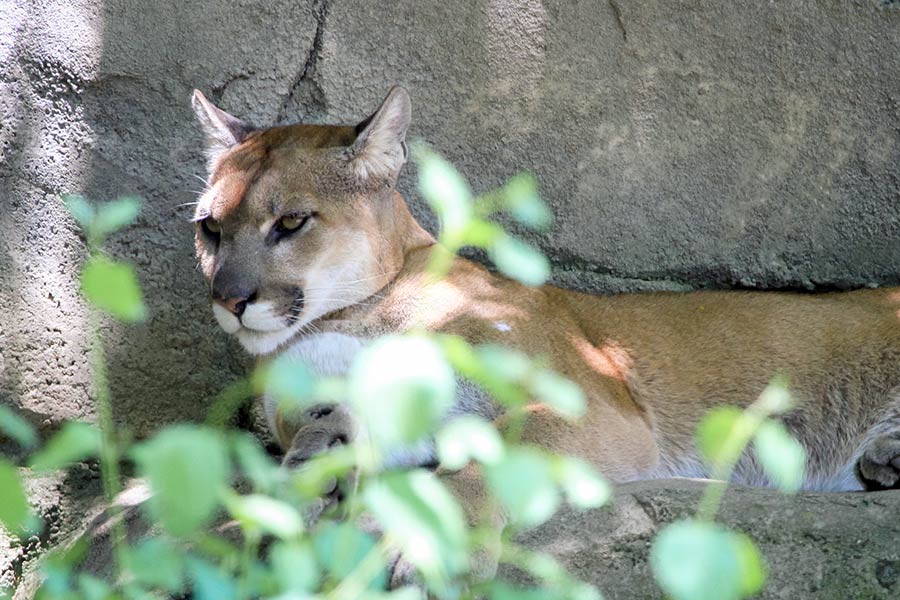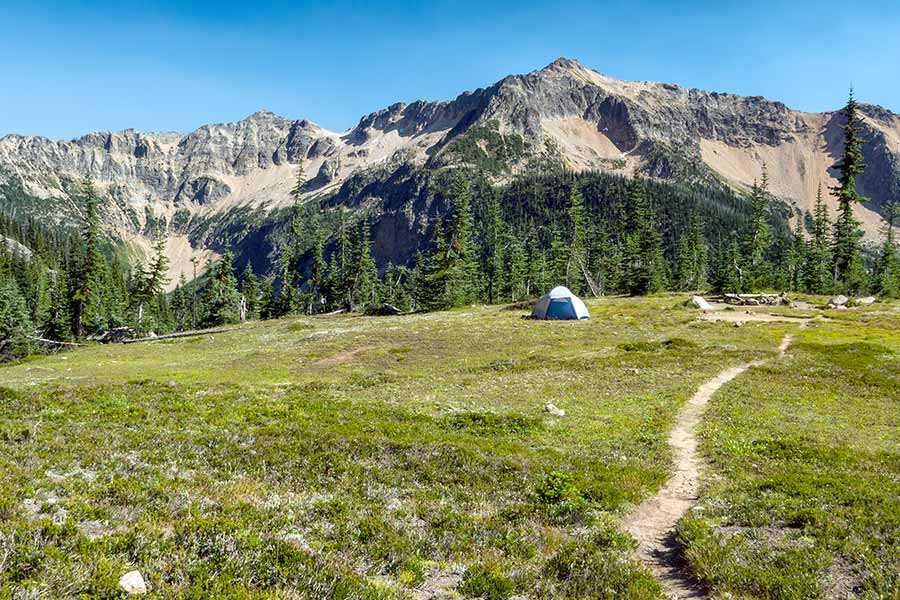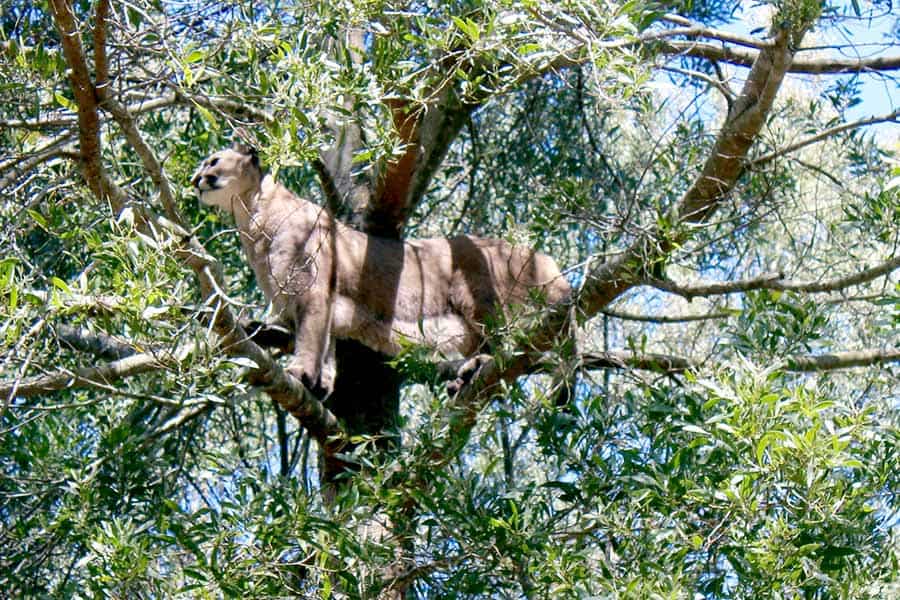
The Pacific Crest Trail (PCT) winds approximately 2,650 miles from Mexico to Canada. It traverses the Sierra Nevada and Cascade Mountain ranges, passing through California, Oregon, and Washington. This hiking trail also passes through 25 national forests and seven national parks; however, many adventurers ask, are there mountain lions on the Pacific Crest Trail?
There are mountain lions along the Pacific Crest Trail (the largest populations of mountain lions are in the California and Oregon sections of the trail). However, attacks by these big cats are rare, and hikers have little to worry about as long as they take some common-sense precautions.
Whether you want to thru-hike or trek a shorter section on a day hike, knowing about mountain lions on the Pacific Crest Trail will help you have peace of mind while you explore. But, are you wondering how worried you should be about mountain lions around the PCT? The following sections will cover mountain lion precautions on the PCT, where mountain lion encounters are most common, and how to react if you see one of these big cats.
Mountain Lions and the Pacific Crest Trail
The Pacific Crest Trail winds from the bottom of California and the border of Mexico all the way up to the US/Canadian border. An estimated one million people+ set foot on some part of the trail each year. The trail scenery ranges from dry desert to alpine meadows, and the terrain can be difficult (especially in California and Oregon). While there are various hazards on the PCT, mountain lions are frequently asked about.

The popularity of this trail and its length mean that hikers can encounter mountain lions at some point during their journey. For some parts of the trail, these mountains are too high for mountain lions to live comfortably in (they like lower elevations with plenty of prey). However, there are a few locales where you might encounter one of these big cats.
Though interactions with mountain lions along the PCT are rare, they do live and roam around many areas the trail passes through. Attacks are not common, but not unheard of, so hikers should take precautions to avoid an encounter altogether.
Mountain lions are found in most of the western United States and parts of Canada. They inhabit forests, grasslands, and deserts. Mountain lions are carnivores and feed primarily on deer, but they’ll also eat smaller mammals, such as rabbits, raccoons, and skunks. The big cats typically travel alone or in pairs, but there have been cases where they’ve hunted together in packs. For the most part, mountain lions tend to avoid humans.
In California, mountain lions live in the San Jacinto and Santa Rosa Mountains near Palm Springs. The most common reports of mountain lion sightings are on the Northern California section of the trail between Sierra City and Burney. Hikers in this area should be especially aware of their surroundings.

In California, mountain lions are defined as a specially protected species. This designation means it is illegal to harass, hunt, trap, or kill them. You must request a permit in order to kill a mountain lion. Oregon also has laws protecting mountain lions. However, there is no closed season for hunting the big cats in Washington state.
While it is unlikely that an attack will occur, it is essential for hikers to know how to react if they see one and ways to prevent an encounter as much as possible. One of the primary things you can do to avoid an attack is to make yourself seem as unappetizing as possible to a cougar. Make lots of noise, travel in groups, and keep children close. If you do happen to meet up with a mountain lion, here are some helpful tips:
- Stay calm
- Do not run
- Make yourself look large by standing tall and spreading your arms
- Speak firmly and loudly
- Pick up children or pets that are with you
Another thing hikers can do is store their food correctly; this means keeping food and scented items like toothpaste and deodorant in bear-proof canisters. Bears are not the only animals that are attracted to food smells. If you store your food properly, it will help keep both bears and mountain lions away. Make sure to wedge your bear canister against a rock or log to ensure a mountain lion can’t dislodge it and carry it away.
Hikers report being stalked by mountain lions at night and seeing them near the trail during the day. However, based on the many people that hike this trail each year, only a small number report mountain lion encounters.

So, are there mountain lions on the Pacific Crest Trail? The answer is yes, with the largest populations in California and Oregon. Though interactions with these big cats are rare, they can be found in many of the areas the trail passes through. To prevent an attack, hikers should take precautions such as making noise, traveling in groups, and keeping children close.
It is also essential to store your food properly at night. Mountain lions are stealthy and powerful predators, so it is vital to stay alert and rehearse how you will react if you see one.
Planning your next camping trip? Don’t miss these nine tips!
Other Posts of Interest
- Thor Sequence vs. Coachmen Nova
- Review: Are Quick-Dry Travel Towels Any Good?
- What To Look For When Buying Binoculars
- What Is Frontcountry Camping?
Does Bear Spray Work on Mountain Lions?
Some hikers wonder what their best defense is. Right after preparation and knowledge, bear spray is an effective deterrent for mountain lions. The spray works just as well as it would with a bear. It is essential to know that pepper spray will not work on all animals, but it’s better to have it available and not need it than the other way around.
Make sure you know how to work the bear spray before you use it. It is also crucial to have a backup plan in case the spray does not work.
Mountain lions are typically shy and try to avoid humans, but there have been cases of them attacking people. Attacks are more common when a lion feels threatened or harassed. Having bear spray with you can be an extra line of defense to help you more fully enjoy the beautiful Pacific Crest Trail.
What Time of Day are Mountain Lions Most Active?
Mountain lions are crepuscular, which means they are most active at dawn and dusk. This pattern is due to their hunting habits—they prefer to stalk prey, and they can be most stealthy when it’s dark.
If you are hiking at night or early in the morning, you are much more likely to come in contact with a mountain lion.
Mountain lions are most active in the late spring to summer. This time is when 2-year-old mountain lions leave their mothers and go out on their own, so there are more roaming that time of year.
Are there mountain lions on the Pacific Crest Trail? The answer is yes, though interactions with these big cats are rare. To reduce your risk of seeing a mountain lion, stick to hiking during the day and not early in the day or late at night.
Do Mountain Lions Climb Trees?
Mountain lions are like other felines–they are great climbers. Chances are, the lion will be able to get up the tree faster than you, and then you will be in more danger. They have been known to climb up to 45 feet.

Mountain lions will climb trees to stalk their prey and then attack from out of the tree.
Mountain lions have also been known to climb trees to get away from dogs or other animals. So if a mountain lion is chasing you, never try to climb a tree to be safe from a mountain lion.
Instead, you will be safer if you put something big and solid between you and the cougar, like a boulder or car. Also, remember that running might trigger the lion’s instinct to chase after prey, so try to stay calm.
Are Mountain Lion Attacks Common in the US
Over the past 100 years, there have been a total of 126 mountain lion attacks in the US. Of those 126, 27 were fatal. Attacks are more common in California than any other state, with 20 fatalities.
Twenty may seem like a high number, but when you consider that there are over 200 million people who visit California each year, the chance of being attacked by a mountain lion is extremely low.
Mountain lions are scary and intimidating, but in reality, most hikers will never come in contact with them. So have a plan, but don’t worry about it too much. Mountain lions are solitary creatures that would much rather run away from humans than attack them. But if you are prepared, you can reduce your risk of an attack even further.
Peace of Mind with Preparation
The Pacific Crest Trail passes through many habitats where many different animals live. Remember, as you journey along the trail, you are passing through the animals’ homes. Preparing for the unexpected will help hikers have a fun, meaningful experience on the PCT as they journey over mountains peaks, through green pastures, and around bare mountain sides.





